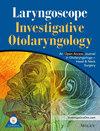Ultrasound (US) is a well-established imaging modality for the evaluation of head and neck anatomy. The Butterfly iQ is a handheld ultrasound device that uses a semiconductor silicon chip array (capacitive micromachined ultrasound transducers, CMUT) instead of piezoelectric crystals used by traditional ultrasounds (TUS), but its accuracy has not been investigated with respect to salivary gland imaging and associated transcutaneous procedures. We aimed to perform a pilot cadaver study to determine the utility and fidelity of the CMUT-US for parotid and submandibular gland imaging and guiding transcutaneous gland injection.
One otolaryngologist injected 0.5 mL of dye into three distinct salivary gland sites (two intraparotid sites and one submandibular gland site) bilaterally on 20 cadavers (n = 120 glands), using either CMUT-US or TUS to guide injection. The cadavers were dissected to identify whether the dye was accurately injected into each site.
The accuracies of CMUT-US and TUS-guided injections in the parotid gland were 95.0% (n = 40) and 90.0% (n = 40), respectively (p = 0.69). In the submandibular gland, the accuracies for the CMUT-US (n = 20) and TUS (n = 20) were both 75.0% (p = 0.72). Across all salivary gland sites, injection accuracy was 88.3% (n = 60) using TUS versus 85.0% (n = 60) using CMUT-US (p = 0.79). No significant differences between modalities were seen in the accuracy of injection based on injection subsite, laterality, cadaver sex, or age.
This pilot study demonstrates that CMUT-US-guided salivary gland injection offers similar high accuracy and reproducibility to TUS-guided injection.
V.



